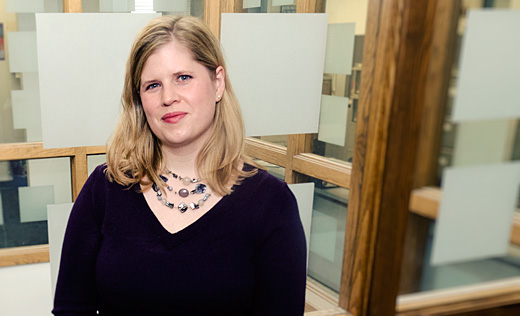
When it comes to architectural style, historic is the new black. Melissa Milton-Pung, project manager for Washtenaw County, draws on her research and travels to make a case for infill development and why preservation means green for your pockets and the environment.
Collaboration Is Not a Dirty Word
Posted By: Melissa Milton-Pung
Posted: 1/18/2012
Historic preservation is a good investment. Here's why.
Over the past several decades, historic preservation has evolved from first-round documentation of superlatives (think about Mount Vernon, George Washington's home and the target of America's first historic preservation society) to pushing the envelope on phone apps that provide interactive walking tours and placing our claim on cool with atomic age design. The discipline of historic preservation has matured from a single-minded focus on saving old buildings for their architectural and/or historic significance to a dynamic policy platform that permeates a wide variety of allied fields and stakeholder groups. The players include historians, planners, architects, engineers, developers, contractors, skilled tradespeople, artists, government at all levels, investors, accountants, attorneys, tourism groups, hotel and retail associations, agribusinesses, and a host of non-profits (including downtown development authorities, Main Street organizations, community development corporations, farmers markets, and affordable housing groups). The list goes on and on.
As aptly stated by the National Trust, this approach asks the question of "How can we better partner and work with traditional and new partners to increase preservation's relevance in modern communities?" The point is that the historic preservation community has hooked into the hottest thing going in the down economy: playing nice with others and getting through this mess, also known as collaboration that creates jobs.??Here are some examples:
If It's Broke, Teach People to Fix It – Historic preservationists are accustomed to using our skills for rehabbing old windows for the sake of a building's integrity. We're now training contractors on how to make those old windows even more efficient than replacements. And, we also promote sustainable practices to prevent landfill waste. Lo and behold, now we're hip with the environmental crowd because the greenest building is the one that's already built. AND, amid the lowest housing starts numbers in more than a generation, the building industry is all over this idea of expanding their markets inward toward the maintenance of existing buildings.
Put Your Money Where Your Feet Are – We want to keep our downtown cores vibrant and walkable, with storefronts filled with reasons for increased foot traffic. (My fan-boy husband suggests that you exercise this concept by visiting Vault of Midnight in downtown A2.) Countless public and private programs across the state are making the conscious choice to invest for revitalization rather than sprawl. For example, a local eastern Washtenaw County partnership initiative has recently invested $60,000 in façade improvements along West Cross Street in Ypsilanti to assist five businesses and property owners in bringing several vacant and underutilized historic buildings up to code to attract new tenants. This investment leveraged over $650,000 in private capital investment and created 27 new permanent jobs. This work coordinated with some street upgrades and resulted in a totally transformed commercial area.
Realize a Better ROI – Historic preservation projects are uniquely linked to communities in a place-based economy that enriches the tax base and helps stabilize property values over time. Because we use skilled trades that act as a "multiplier that ripples through the economy" as reported in a recent study by PlaceEconomics, "$1 million in building rehabilitation creates 12 more jobs [in Michigan] than does manufacturing $1 million worth of cars."
Building rehab projects are outstanding case studies for cross-sectoral collaboration and job creation. Often using our dearly departed Michigan Historic Tax Credits, they were truly some of the only projects moving during the credit crunch of 2008 to 2011. For every $1 of state historic tax credit issued, $4 in private investment was generated. Even before the economy tanked, private investment spurred over $902 million to Michigan's economy between 2001 and 2005, for a total economic impact of more than $1.93 billion and the creation of more than 22,000 jobs.
These trends are exciting, and gratifying, in a rustbelt region caught up in a painful economic adolescence. We don't know what's next, but there are some promising indicators. As it stands now, despite the loss of such useful financing tools for community investment as a result of the budget process, the state of Michigan is working on unrolling a Community Revitalization Program that will provide $100 million in grants to continue the work of MEGA, brownfield, and historic tax credit programs. We can hope that in the future that this relatively small pool of money will be increased for even greater investment in our communities, and that these exciting trends of collaborative partnerships will continue to strive and thrive.
It simply makes good economic sense.